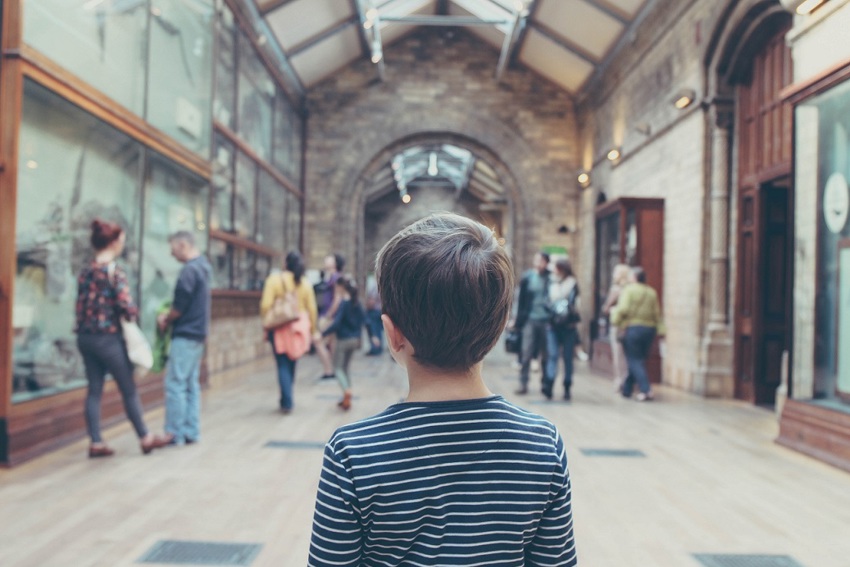Balancing and thinking holistically
There is an opportunity to think holistically and create balance – for a good life in a good environment. By reflecting on modern ways of living, we can integrate sustainability, energy efficiency and good ventilation into every indoor space.

Our lives and the environments
People are indoor creatures and they need shelters to provide them with spaces where they can thrive. Housing and building technology are key elements in helping humans adapt to various and challenging conditions.
Millions of years ago, people lived mainly outdoors, as they were primarily animal hunters and food gatherers. Cave, shelter, castle or house - basically any structure over people's heads - were safe places for protection. However, today people have different needs and spend the majority of their time indoors due to various lifestyles, and they can be called the indoor generation.
Between 1800 and 2000, the percentage of humans working outside decreased from 90% to less than 20%. And in a very short time, that has reversed completely, and now people stay indoors for more than 90% of the time. Looking back over the past few centuries, the clear evolution in priorities for buildings has shifted time and again, with health remaining a central theme and a rising focus on the comfort of people in buildings, all closely tied to the energy performance of buildings.
Therefore, buildings and indoor environments impact people's lives - every day, every year, for the life expectancy of 72-78 years. People transitioned from living outdoors in danger to moving indoors for protection, turning their attention towards their health and well-being.
So, new questions have arisen. What is 'indoor living' doing to the health, well-being and productivity of people? And why does the indoor environment in buildings now need to be linked closely with productivity and performance?
Find out more about our lives and the environments
The buildings, where we spend most of our time, provide protection between us and the outdoors. The design, construction, operation and maintenance of buildings can impact the air we breathe, energy consumption and our health.
We need to use various strategies, tools and elements to design and keep buildings in their best shape — now and for the future.

Ventilation, energy and environment
There is synergy between ventilation, energy and the environment. When the three elements work together, they deliver a balance between fulfilling people's needs, technological efficiency and ecological responsibility.
Ventilation sits right between energy and the environment - it is both a consumer of energy and a protector of the environment, both indoors and outside. Efficient ventilation enhances indoor environmental quality, directly linking to concerns about outdoor air quality and sustainability, which in turn results in reduced emissions from heating/cooling and improved resilience against climate change.
Building systems require a balance of ventilation requirements, energy use, and environmental considerations. By employing adaptive and demand-based strategies, energy efficiency strikes a balance between individuals' comfort needs and ecological objectives. Smart-ready systems optimise ventilation while delivering comfort for building occupants, reducing energy use and thus the building's environmental footprint.
By directly linking the indoor environmental quality (IEQ) parameters to energy performance and utilising the Energy Performance of Buildings Directive (EPBD) with leveraging the Smart Readiness Indicator (SRI), the indoor environment can become visible, measurable and evaluated.
Achieving synergy between ventilation, energy and the environment is crucial for the next generation of people living in highly-efficient buildings and it creates sustainable environments for people.
Discover interlinking between ventilation, energy and environment
Sustainability, architecture and design
It all starts with a new building — with architecture and design, then comes the sustainable indoor climate.
Sustainable architecture is an eco-friendly approach to modern-day building encompassing every aspect of the planning and construction process, including: the choice of building materials; the design and implementation of heating/cooling; ventilation systems and waste systems and the integration of the built environment into the natural landscape.
Integrated design is a method for effective and sustainable building. When used throughout a building project, integrated design methods produce better buildings for both those using the building and the environment.
There is a need for practical information, data, metrics, and tools that can be incorporated into investment choices and policymaking related to sustainable, high performing building designs, technologies, standards, and codes.
Sustainability encompasses both the economics of building construction and operation as well as the environmental impacts. Evaluations are completed using a life-cycle approach and include economic performance using energy costs and environmental performance using various assesments methods.
All these and more will lead potential to the healthy environments in buildings in the future. And in forefront, there will be the implementation of technologies in the fields of energy-efficiency, indoor environment and design to achieve good indoor environment.
Dig into sustainability, architecture and design

21st Century choice: Look after our planet, and it will look after us, or don’t and face the consequences.Phil Harding, British archaeologist and TV personality